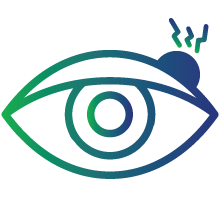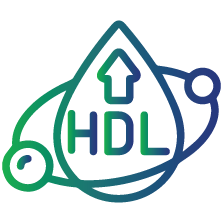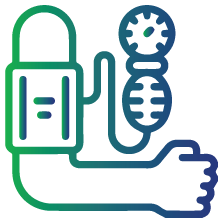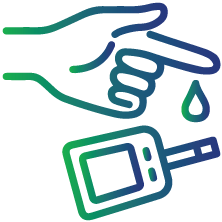
LDL Cholesterol, Direct
What is Direct LDL Cholesterol Test
The amount of cholesterol found in low-density lipoproteins (LDL) in a blood sample is measured using direct LDL cholesterol test. LDL cholesterol can accumulate in blood vessels such as arteries and raise the risk of stroke, heart disease, and heart attack. It is known as a type of "bad" cholesterol.
A waxy substance called cholesterol plays a role in several critical cellular processes, including the production of cell membranes and the production of steroid hormones. Lipoproteins are fatty and protein-based particles that transport cholesterol in the blood. Even though cholesterol is essential for healthy cell function, having too much of it can be harmful to your health.
Thus, getting your direct LDL cholesterol test done can help in the early detection of cardiovascular disease risk and can also be used for cholesterol monitoring and diagnosing various health conditions.
This test is also known as DLDL, LDL D, Direct LDL-C, Direct LDL, Direct Low-Density Lipoprotein Cholesterol Test and Measured LDL Cholesterol Test.
Symptoms of high cholesterol
Although high cholesterol usually has no symptoms, it can result in heart attack and stroke if left untreated.
However, in the case of familial hypercholesterolemia condition you may experience the following symptoms of high cholesterol:

Swellings on the knuckles, knees, or at the back of the ankle

Small, yellow cholesterol lumps near the corner of the eyes

Pale white ring around the iris
Who should get tested?
LDL cholesterol, direct test is recommended to be performed frequently in adults who have risk factors for high triglycerides. Examples of risk factors include:

If you are over 60 years of age

High cholesterol on a prior test

Past history of heart disease

Family history of heart disease or of high cholesterol

Being overweight

Smoking cigarettes

Alcohol consumption

Having high blood pressure (hypertension)

Having type 2 diabetes

Eating an unhealthy diet

Leading an inactive lifestyle
Test preparation
No special preparation is required for an LDL cholesterol, direct test but if other tests like a cholesterol panel is ordered along with this test, then it is important to fast for 9 to 12 hours prior to sample collection.
Interpretation of results
The units of measurement for the results are Milligrams per decilitre (mg/dL)
|
Remarks |
LDL cholesterol (mg/dL) in adults |
|
Optimal |
<100 |
|
Above Optimal |
100-129 |
|
Borderline High |
130-159 |
|
High |
160-189 |
|
Very High |
>=190 |
Deviation from normal levels indicates the following:
- The optimal level of LDL cholesterol depends on your risk factors. Generally, LDL cholesterol level of 100 mg/dL or lower is considered to be optimal.
- Having higher-than-normal levels of LDL cholesterol can increase your risk of cardiovascular diseases such as atherosclerosis, heart attack, stroke, peripheral arterial disease, etc.
- Very high LDL-C levels may be caused due a genetic condition known as familial hypercholesterolemia.
- Having abnormally low LDL cholesterol level is rare. This condition typically indicates an issue with the processing of the vitamins A, D, E, and K.
FAQs
How is the sample collected for an LDL cholesterol, direct test?
A blood sample is taken from a vein in the arm using a fine needle. This procedure typically takes no longer than five minutes.
What is the turnaround time (TAT) for the results of an LDL cholesterol, direct test?
What are the risks associated with an LDL cholesterol, direct test?
This test involves negligible risk of infection. There might be slight bruising or tenderness around the site where the needle is inserted.
What are the limitations of an LDL cholesterol, direct test?
The results of an LDL cholesterol, direct test may be impacted by factors such as use of contraceptives, alcohol consumption, and smoking. Additionally, stress and particular medical conditions like Waldenstrom’s macroglobulinemia can also affect the accuracy of the test results.
What should you do if you have a high LDL cholesterol, direct test result?
In the case of an abnormal LDL cholesterol, direct test result, your healthcare provider will recommend an appropriate treatment plan based on your age, family history, medical history, and current medications.
If your LDL cholesterol levels are elevated, you should make some lifestyle changes such as making dietary adjustments, exercising regularly, and losing excess weight. You might be given a prescription for cholesterol-lowering drugs by your healthcare provider if necessary.

